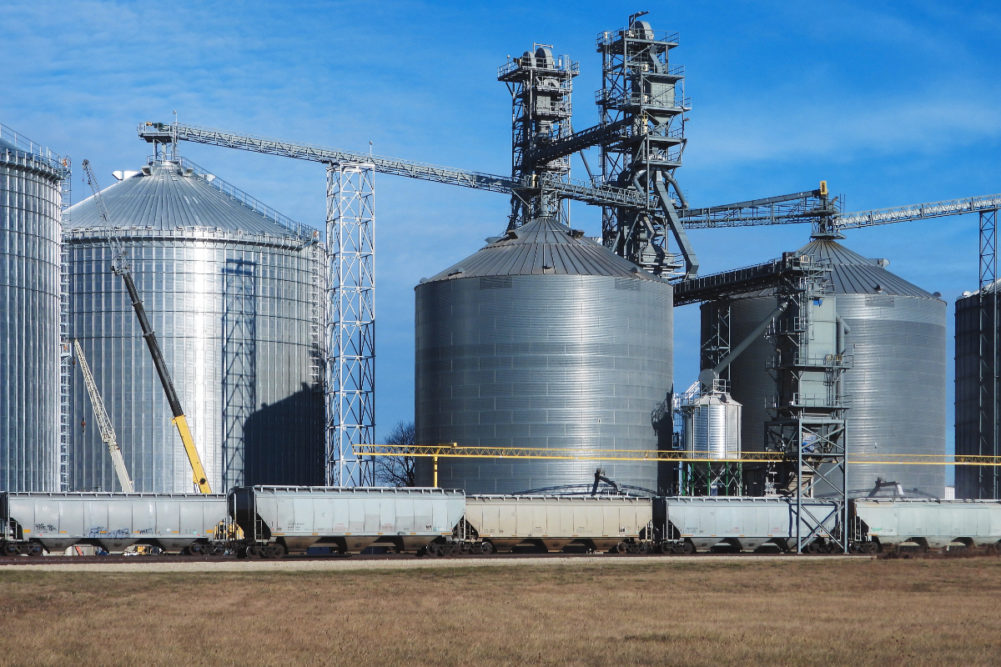KANSAS CITY — In the first week of March, grain transportation systems continued to move toward normalcy more than two weeks out from a 10-day stretch of February where low temperatures stymied rail, truck and barge activity.
Shipments of hard red winter wheat from the central and southern Plains region were active. Loaded cars were arriving in a timely fashion, market participants indicated.
Though no major backlog of rail cars was evident, railroads had not “totally dug themselves out of their winter-weather-problem holes yet,” a merchandiser said. Some theorized cars that accumulated in holding yards during severe weather would reach destinations simultaneously and be cycled back origins all at once as late as mid-March.
Still, “no one’s anticipating a problem at this point,” a miller said.
Rail activity
Total US weekly rail traffic in the week ended Feb. 27 was 486,426 carloads and intermodal units, up 2% from the same week a year earlier, according to a report from the American Association of Railroads. That included 215,181 carloads, down 9% from the same week in 2020, and 271,248 intermodal containers and trailers, up 12% compared with 2020.
Grain, the only carload commodity group to post a year-over-year increase for the week, saw 23,530 US carloads originated, up 14% from the same week a year earlier.
For the month of February, 824,636 carloads were originated by US railroads, down 11%, or 102,972 carloads, from February 2020. Also in February, 1,015,995 containers and trailers were originated, up 2%, or 18,184 units, from February 2020. Combined US carload and intermodal originations in February 2021 were 1,840,631, down 4%, or 84,788 carloads and intermodal units, from February 2020.
North American rail volume in the AAR weekly report consists of 12 reporting US, Canadian and Mexican railroads. For the week ended Feb. 27, 2021, those railroads transported 313,051 carloads, down 7% compared with the same week last year, and 359,293 intermodal units, up 12% compared with last year.
North American rail volume for the first eight weeks of 2021 was 5,419,585 carloads and intermodal units, up 1.1% compared with 2020.
“During February, snow and ice covered wide swaths of the country, including many areas that rarely see harsh winter weather, wreaking havoc on all forms of transportation, including rail,” said John T. Gray, senior vice president of AAR in comments accompanying the report. “In fact, the total US rail carloads in the third week of February were the lowest for any week in AAR’s records that go back to 1988.
“While carloads rebounded during the last week to a more typical level, February ended with noticeably lower total volumes. On the positive side, both intermodal and grain traffic remained relatively strong through three of the four weeks of the month.”
For the week ended Feb. 27, Canadian railroads originated 79,210 carloads, down 2%, and 71,724 intermodal units, up 24% compared with the same week in 2020. For the first eight weeks of 2021, Canadian railroads reported cumulative rail traffic volume of 1,185,535 carloads, containers and trailers, an increase of 5% from the same period in 2020.
Canadian grain carloads for the week totaled 9,041, a 38% increase from the same week in 2020.
In the same week, Mexican railroads reported 18,660 carloads, down 17% compared with the same week last year, and 16,321 intermodal units, down 12%. Cumulative volume on Mexican railroads for the first eight weeks of 2021 was 289,896 carloads and intermodal containers and trailers, down 7.3% from the same point last year.
Mexico-originated grain carloads for the week totaled 2,516, a 3% increase from the same week a year earlier.
The average March shuttle secondary railcar bids and offers per car were $0 for the week ended Feb. 25, according to the USDA’s Agricultural Marketing Service. This was $223 less than the previous week and $160 more than the same week in 2020. There were no non-shuttle bids or offers for that week.
Barge activity
In the week ended Feb. 27, the volume of barge grain movements totaled 439,100 tons, down 10% from the previous week and up 11% from the same period in 2020, according to the US Army Corps of Engineers. In the same week, 267 grain barges moved down river, a decline of 16 barges from the previous week. There were 779 grain barges unloaded in New Orleans, a 16% increase from the previous week.
Ocean freight
In the week ended Feb. 25, 41 oceangoing grain vessels were loaded in the Gulf, a 32% increase compared with the same week in 2020, the AMS said.
On Feb. 25, the rate for shipping a one tonne of grain from the US Gulf to Japan was $57.50, a 6% increase from the previous week. It cost $32.25 per tonne to ship from the Pacific Northwest to Japan, unchanged from the previous week.
Trucking
The US average diesel fuel price in the week ended March 1 was $3.072 per gallon, up 9.9¢ from the previous week and 22.1¢ higher compared with the same week in 2020.





